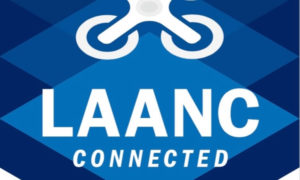The FAA has announced the expansion of the Low Altitude Authorization and Notification Capability (LAANC) program to more than 100 new control towers and airports.
The announcement comes on the heels of the implementation of new rules for recreational fliers, which will prohibit flight in restricted airspace around airports except at identified flying fields. This arrangement is a temporary fix until the LAANC program can be updated to accommodate recreational pilots, at which time they will be able to request authorization throught the same process used by commercial drone pilots.
The LAANC program is developed to alleviate the burden of a lengthy manual authorization process for both regulators and pilots. Through a growing list of technology partners, drone pilots can request authorization to fly in restricted airspace in covered areas and receive that authorization in near real-time. The latest roll-out continues the expansion of coverage for LAANC, which currently covers about 600 airports. Commercial pilots who wish to fly near airports not currently part of the LAANC program can still use the manual process.
The following is an FAA press release.
Starting today more than 100 control towers and airports will be added to the hundreds of Federal Aviation Administration (FAA) air traffic facilities and airports that currently use the Low Altitude Authorization and Capability (LAANC) system.
LAANC is a collaboration between the FAA and industry that directly supports the safe integration of Unmanned Aircraft Systems into the nation’s airspace. LAANC expedites the time it takes for a drone pilot to receive authorization to fly under 400 feet in controlled airspace. By adding contract towers to the number of LAANC-enabled facilities, drone pilots will have access to more than 400 towers covering nearly 600 airports.
Contract towers are air traffic control towers that are staffed by employees of private companies rather than by FAA employees.LAANC provides air traffic professionals with visibility into where and when authorized drones are flying near airports and helps ensure that everyone can safely operate within the airspace. The expansion to more than 100 contract towers means the FAA has further increased drone pilots’ access to controlled airspace safely and efficiently.
LAANC is currently used by commercial pilots who operate under the FAA’s small drone rule (PDF) (Part 107). The FAA is upgrading LAANC to allow recreational flyers to use the system and in the future, recreational flyers will be able to obtain authorization from the FAA to fly in controlled airspace. For now, recreational flyers who want to operate in controlled airspace may only do so at fixed sites.
For updates to LAANC capabilities, visit www.faa.gov/go/laanc.

Miriam McNabb is the Editor-in-Chief of DRONELIFE and CEO of JobForDrones, a professional drone services marketplace, and a fascinated observer of the emerging drone industry and the regulatory environment for drones. Miriam has penned over 3,000 articles focused on the commercial drone space and is an international speaker and recognized figure in the industry. Miriam has a degree from the University of Chicago and over 20 years of experience in high tech sales and marketing for new technologies.
For drone industry consulting or writing, Email Miriam.
TWITTER:@spaldingbarker
Subscribe to DroneLife here.
